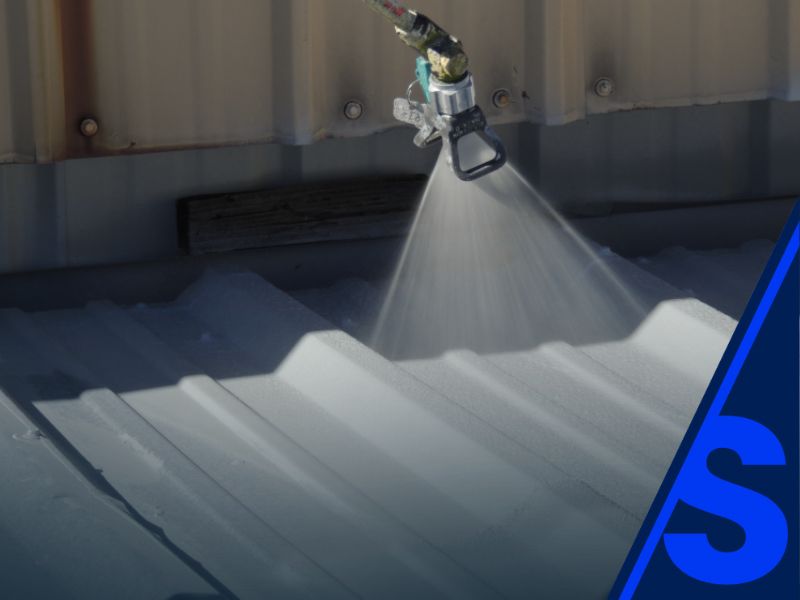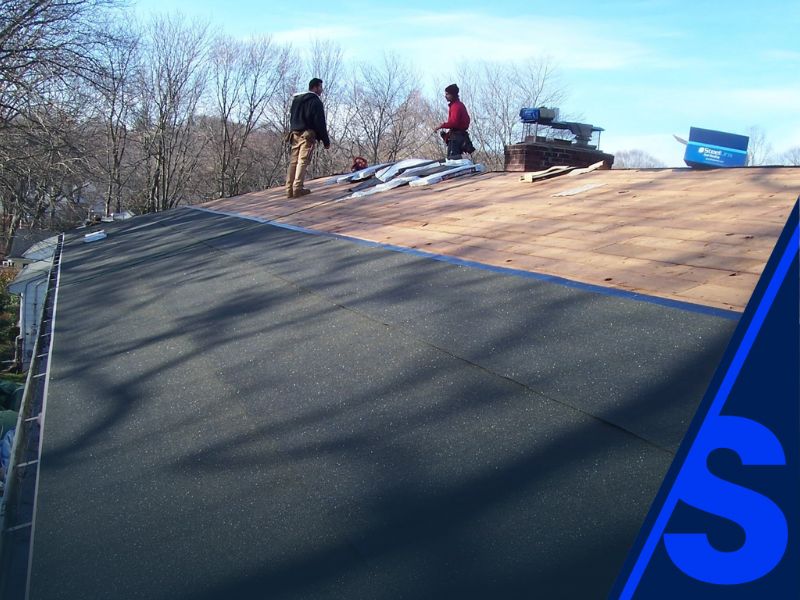Table of Contents
For builders managing new construction projects, selecting the right roof system is more than just an aesthetic choice, it directly affects project timelines, code compliance, operational efficiency, and long-term durability. Elastomeric roof coatings have emerged as a versatile solution, offering waterproofing, thermal performance, and substrate protection, all while simplifying lifecycle management for builders.
This comprehensive guide focuses on the technical pros and cons of elastomeric coatings, substrate compatibility, and installation best practices, helping builders make informed decisions that minimize callbacks, maintain compliance, and streamline project operations.
For professional guidance or installation, CitySide New Construction Roofing Services ensures coatings are applied to specification, fully documented, and integrated with your project schedule.
What Is an Elastomeric Roof Coating and How Does It Work?
An elastomeric roof coating is a highly flexible, polymer-based membrane applied over an existing roof or as part of a new build. Unlike traditional roofing materials, elastomeric coatings expand and contract with temperature fluctuations, providing a seamless protective layer.
Key builder benefits include:
- Waterproofing and leak prevention – Reduces the risk of costly rework due to moisture intrusion.
- Substrate protection – Extends the functional life of roofing materials, including metal, concrete, and built-up roofs.
- Thermal expansion accommodation – Maintains integrity in high-UV or high-heat environments common in Florida and other southern states.
- Operational efficiency – Applied in liquid form, reducing labor intensity compared to sheet membranes or full roof replacement.
Proper application requires surface preparation, quality assurance checks, and adherence to manufacturer and building code specifications. Builders can partner with CitySide Professional Installation Services to ensure coatings meet all project and regulatory requirements.
Types of Elastomeric Coatings and Substrate Compatibility
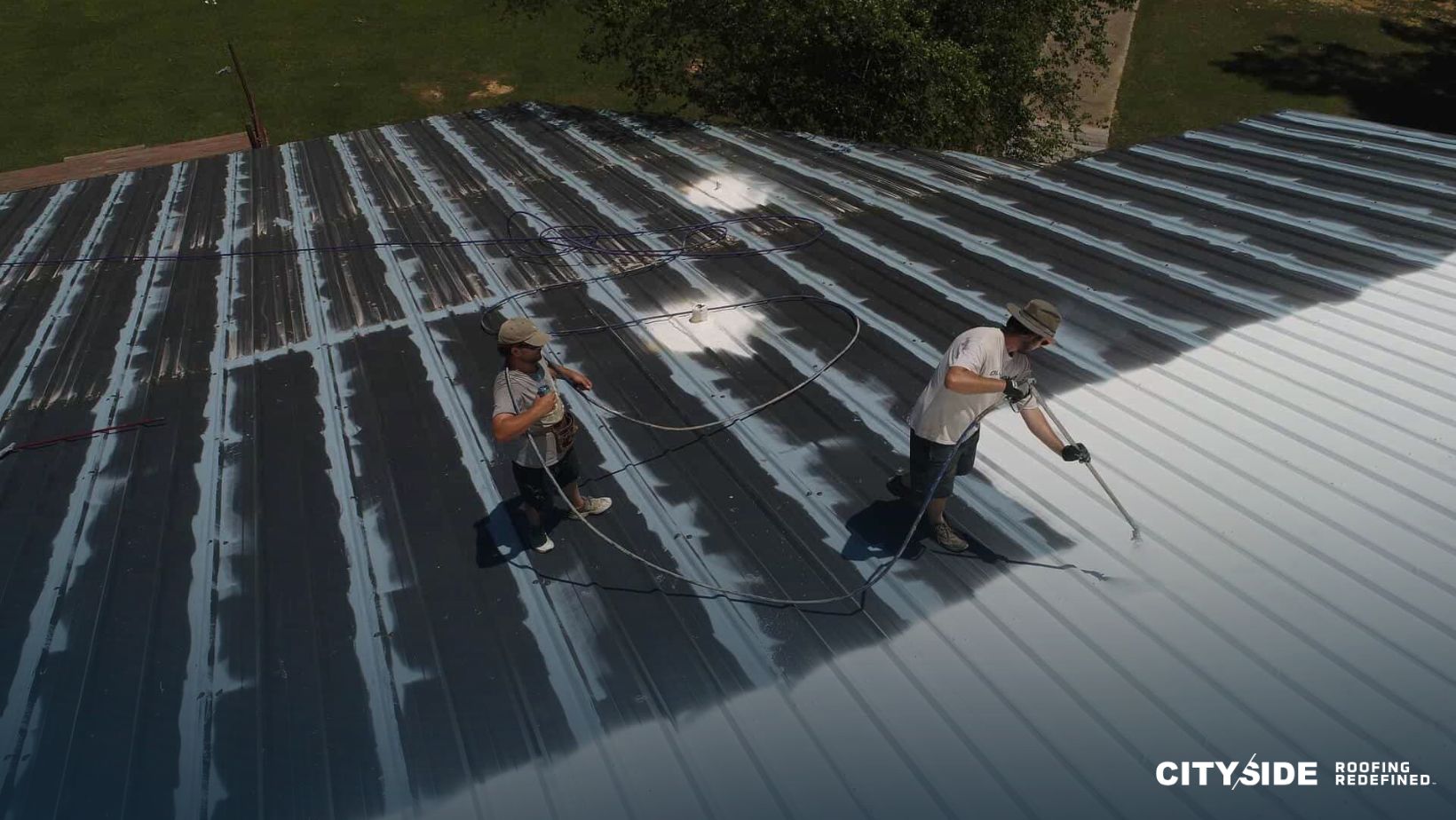
Choosing the right coating begins with understanding the chemical formulation and compatibility with the substrate. Builders should evaluate each option based on project requirements, climate conditions, and lifecycle expectations.
Coating Type | Advantages | Limitations | Best Suited Substrates | Typical Builder Use Case |
Acrylic | UV-resistant, cost-effective | Lower water resistance, poor ponding water performance | Sloped roofs, asphalt, BUR | New builds where cost and UV resistance are priorities |
Silicone | Highly waterproof, UV-stable, long lifespan | Higher upfront cost | Flat roofs, metal, TPO | Flat roofs in heavy rainfall areas, projects requiring long-term waterproofing |
Polyurethane (PU) | High impact resistance, durable | Sensitive to UV without topcoat | High-traffic areas, industrial roofs | Rooftops exposed to mechanical stress, roof walkways |
Builders should consult manufacturer-approved substrate compatibility lists and ensure coatings meet CitySide Roof Coating Compatibility Guidelines. Proper matching reduces failure risk, protects warranty compliance, and avoids costly callbacks.
Pros and Cons of Elastomeric Roof Coatings by Roof Type
While elastomeric coatings are highly versatile, their performance varies depending on roof type and environmental conditions. Here’s a builder-focused evaluation:
Pros:
- Extends roof lifecycle without full replacement, reducing material and labor costs.
- Enhances waterproofing, protecting the substrate from corrosion, UV degradation, and moisture damage.
- Reflective coatings lower surface temperatures, helping new construction projects meet energy code requirements.
- Seamless application reduces the risk of leak-prone seams and joints.
Cons:
- Improper surface preparation can lead to adhesion failure.
- Not all coating chemistries perform well on every substrate; mismatches can cause premature wear.
- Extreme weather exposure may require reapplication sooner than expected if specifications are not strictly followed.
By aligning coating selection with building type, substrate, and environmental conditions, builders can reduce lifecycle risks while maintaining operational efficiency.
Installation Best Practices for Builders
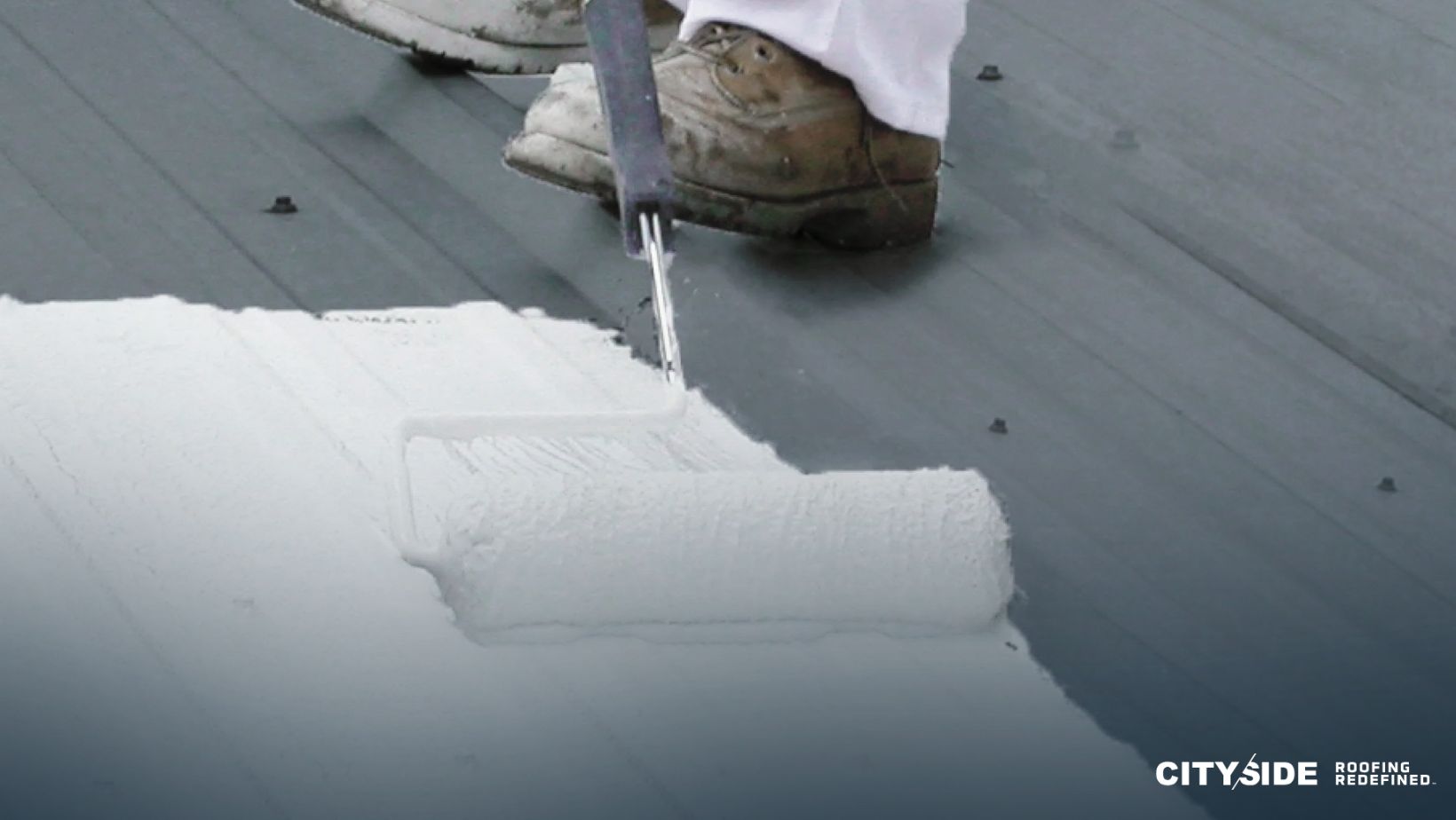
Installation quality directly impacts performance, warranty, and maintenance requirements. Builders should follow a structured, QA-driven approach:
- Surface Preparation – Remove debris, oils, and contaminants to ensure adhesion.
- Roof Inspection – Use an American National Roofing Contractors Association (NRCA) checklist to verify substrate integrity and code compliance.
- Repairs Before Coating – Address leaks, penetrations, and structural weaknesses before coating.
- Code Compliance Integration – Apply coatings in line with Florida Building Code or other local requirements, including ice/water underlayment if required.
- Layered Application – Apply multiple coating layers according to manufacturer specifications.
- QA Documentation – Record thickness, curing time, and adhesion tests. Integrating QA into the project schedule ensures minimal disruptions and full warranty coverage.
Builders can leverage CitySide Professional Installation Services for end-to-end project management, reducing risk and improving operational efficiency.
Silicone vs. Acrylic Coatings: Detailed Technical Comparison
For new construction, the choice between silicone and acrylic coatings often determines long-term performance:
Feature | Silicone | Acrylic |
Water Resistance | Excellent, suitable for standing water | Moderate, poor ponding performance |
UV Stability | High, long lifespan | Moderate, may degrade in extreme UV |
Flexibility | Moderate, resists cracking | High, expands/contracts with temperature |
Cost | Higher upfront | Lower upfront |
Typical Florida Use | Flat or low-slope roofs exposed to heavy rain | Sloped roofs with minimal ponding, high UV |
Builders in Florida frequently prefer silicone coatings for flat roofs and acrylic coatings for sloped roofs, ensuring compliance with Florida Building Code energy and waterproofing standards.
Energy Efficiency & Code Compliance for Builders
Elastomeric coatings also contribute to operational efficiency by aligning with energy and building codes:
- Reflective coatings reduce rooftop temperatures, mitigating heat stress on the building envelope.
- Helps meet ASHRAE 90.1/Florida Energy Code requirements for new construction.
- Can be integrated into ERP and project scheduling software, so builder teams track coating application, QA results, and energy compliance documentation.
CitySide’s technology-enabled process ensures that every coating application is documented, verified, and aligned with operational and code requirements. Builders can rely on CitySide Energy-Efficient Roofing Services for solutions that meet compliance while streamlining project delivery.
Common Installation Challenges & Risk Mitigation
Even high-quality coatings can fail if operational best practices are ignored. Builders should anticipate these challenges:
- Poor Adhesion – Often caused by inadequate surface preparation or moisture in the substrate.
Mitigation: Pre-application inspections, surface moisture checks. - Incorrect Coating Type – Substrate mismatch can reduce adhesion and lifecycle performance.
Mitigation: Consult manufacturer-approved compatibility lists and CitySide technical support. - Inadequate QA Documentation – Leads to warranty disputes or non-compliance.
Mitigation: Maintain detailed records of thickness, curing, and inspections integrated into ERP or project management systems. - Environmental Stressors – High UV, ponding water, or mechanical traffic can compromise coatings.
Mitigation: Choose coatings engineered for local climate conditions and project type.
Builders can reduce operational risk by partnering with CitySide Roofing, whose teams specialize in preventive QA and lifecycle management.
Lifecycle Management: Maximizing ROI on Coatings
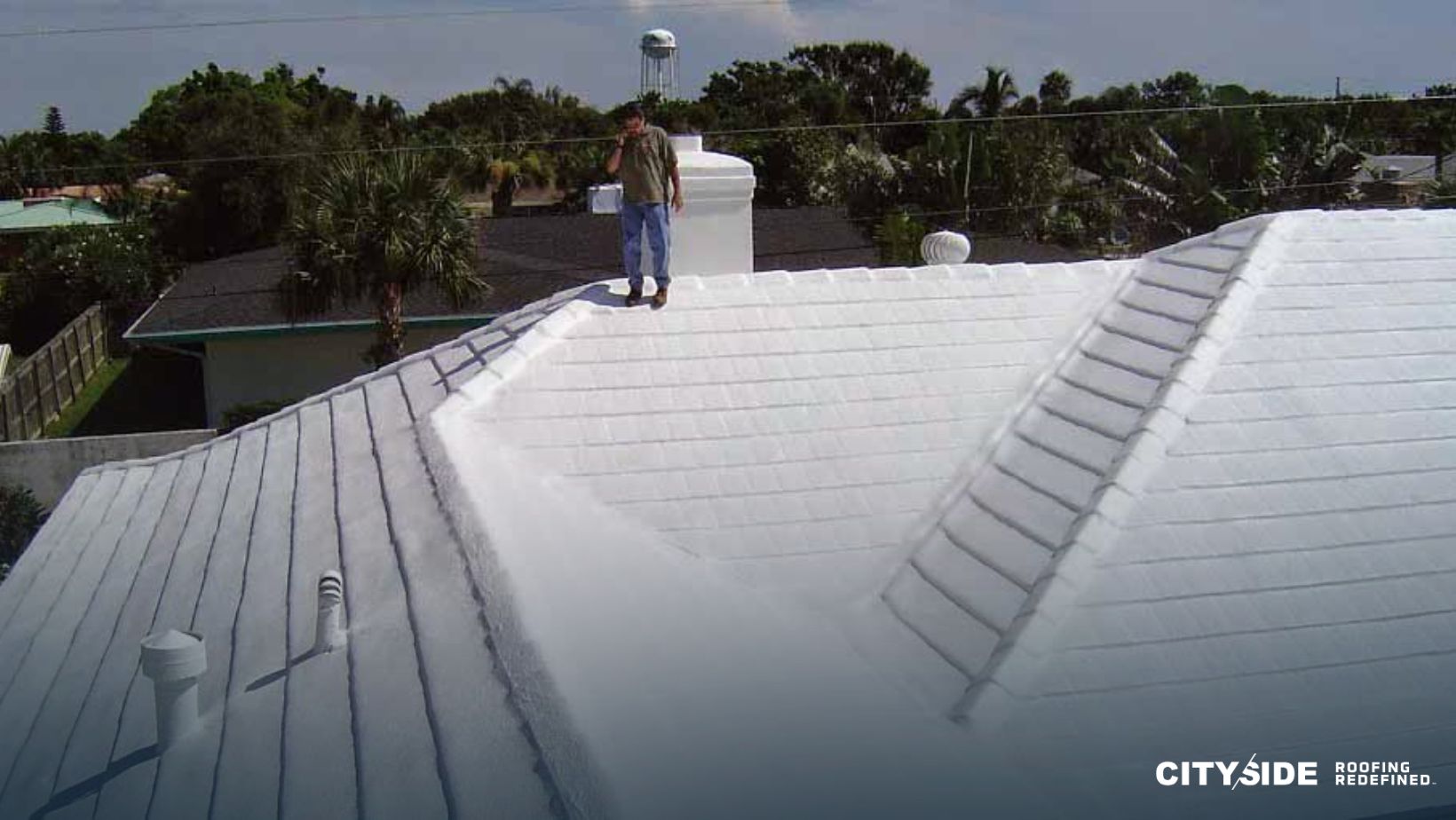
For builders, lifecycle planning is a key consideration:
- Reduced callbacks: Properly applied coatings extend roof life, reducing post-construction repairs.
- Project scheduling efficiency: Liquid-applied coatings speed installation compared to full membrane replacements.
- Warranty compliance: QA documentation ensures long-term coverage and minimizes liability.
- Long-term cost control: Lower replacement and maintenance costs increase ROI per project.
CitySide’s integrated QA process includes automated scheduling, ERP tracking, and digital validation, giving builders peace of mind and predictable outcomes.
Builder Takeaways
Elastomeric roof coatings are more than a roofing solution, they are a strategic choice for builders aiming to optimize durability, code compliance, and operational efficiency.
Key takeaways:
- Match coating type to substrate and environmental conditions.
- Prioritize proper preparation, application, and QA documentation.
- Use reflective coatings to meet energy code requirements and reduce heat stress.
- Partner with professional installers for predictable lifecycle performance and reduced callbacks.
- Integrate coating projects into broader construction schedules to maintain operational efficiency.
By selecting and applying elastomeric coatings correctly, builders extend roof lifecycle, streamline operations, and ensure compliance with both code and client expectations.
Schedule your next professional consultation with CitySide Roofing to ensure your new construction project is equipped with high-performing, code-compliant elastomeric roof coatings.
